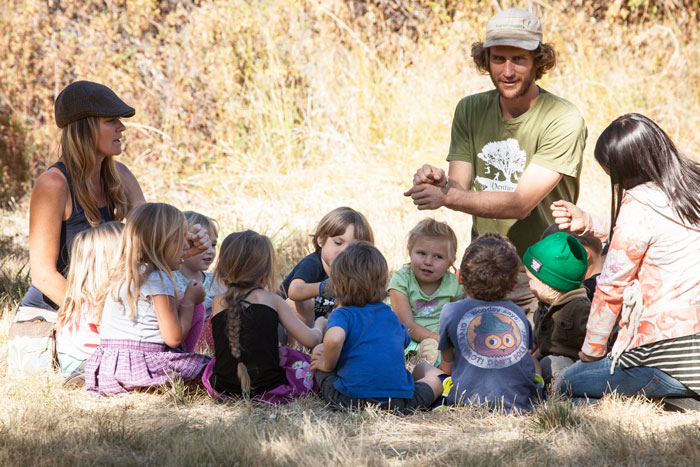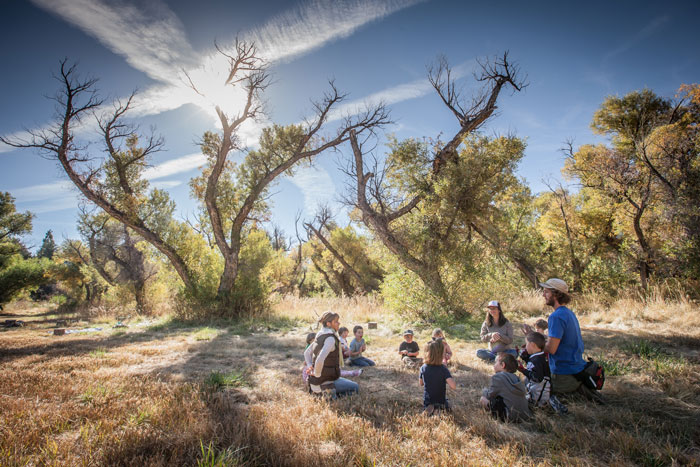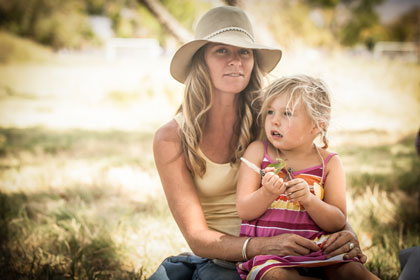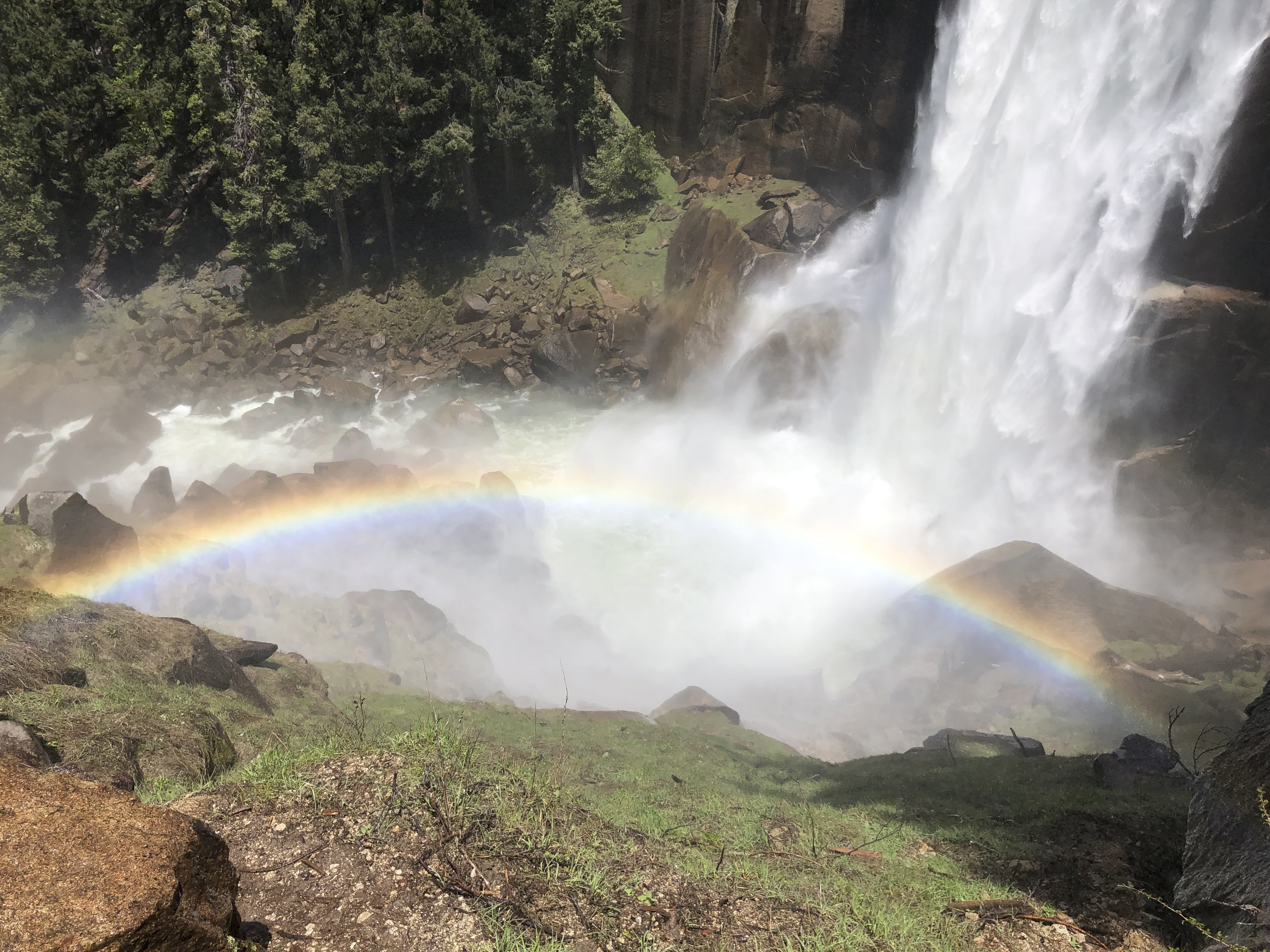- Nature-Deficit Disorder and Forest Schools - 04/03/2019
The burgeoning education model of forest school is reconnecting children with nature Nature-Deficit Disorder
Words and photos by Bruce Willey
“The best classroom and the richest classroom is roofed only by the sky.” — Margaret McMillan
The connection between nature and humans has never been so fraught or frail. With rapid technological wonders vying for our attention spans, the weedy wonders of nature have, for many, fallen by the wayside. And there’s a name for it: nature-deficit disorder.
Nature-deficit disorder has come to define children who spend too much time indoors, dependent on screens and a life shaped by a digitized reality. The titles of best-selling books like Last Child in the Woods and Balanced and Barefoot attest to the growing worry amongst child psychologists and parents alike that attention-deficit disorder, depression, and obesity — to name a few — can be correlated with a disconnection to nature.
Enter the forest school educational concept, where kids do their learning out in the open without four walls to constrict their impulse to be, well, outside. The idea was “invented” in the 1950s in Denmark and quickly spread to Sweden, then throughout Europe where it continues to be popular. Today, there are an estimated 240 forest schools in the US including nearly two-dozen in California.
Forest schools may not be a good fit for every child or for that matter, every parent. Those looking for all day pre-school or who have a child that prefers the indoors will only find forest schools to be frustrating.
“Life in modern times moves very quickly. It’s loud both visually and aurally,” says Lia Grippo, Wild Roots Forest School founder and director in Santa Barbara, whose program has been running for 20 years. “We begin to see the effects of it. We see children struggling to move their bodies, with balance, and self-regulation, all of which are developed with play in the natural environment. A young child’s nervous system needs to be soothed by the sound of the breezes rustling in the trees, the sound of bird calls. They don’t have to tune the world out because the world is not over-stimulating and so they remain open.”
I decided to drop in on a forest school, something made eminently easier because I drop off and pick up my daughter from Wild Roots Forest School four days a week. I’ve been doing this, rain or shine, since Matilda was three. Here in the Eastern Sierra, I’ve dropped her off in sidewise blowing snow in winter and picked her up on blistering hot summer days. The forest school mantra has always been, “There’s no such thing as bad weather, just bad clothing.”
It’s a little after 9am. A large pine tree is quaking as if by some internally produced wind. Hidden inside the tree’s branches is a parliament of preschoolers and kindergarteners scaling its branches. Had this been an inside institution a playground attendant would surely be bellowing at the children to come down. But here the teachers educate the children to be mindful about the hazards even as they pay extra close attention to the arboreal action taking place.
Besides learning which branches will hold their weight, the kids are blissfully unaware that they are acquiring important skills such as resilience, perseverance, and grit, not to mention the multisensory kinesthetic and tactile skills that will help them navigate a multi-faceted world both within and outside nature. These skills learned early on have been shown to carry into the classroom and later, into adult life.
Despite the wild, self-guided learning style there are a lot of civilizing nudges at work. After an hour of exploratory, undirected play, it’s time for circle. When a cold “Brother Wind” blows the kids gather around a fire they helped start. They muster in a circle, singing a song to the dear earth, the dear sun, the dear beasts and birds. Hot tea and healthy snacks are served. Within the circle the children foster social skills, self-regulation, and empathy for each other. It is without a doubt a circle of some of the most polite little human beings you’ll ever witness. Everything shared is passed to each other with “please” and “thank you.”
Leading the circle is Erin Boehme, her waist decked in the hand-sewn cloth tool belt most Wild Roots teachers wear that contains the tools of the trade: first-aid kit, knife, notebook, small saw, string, sandpaper, and a field guide to wildflowers or birds.
“As forest school teachers we have the challenge to combine at least two professions into one,” Boehme says. “Not only do we focus on early childhood education and our deep understanding of child development, but work to become practiced and strong naturalists as well as nature connected. In doing both of those things we have to learn how to combine them and make a classroom that’s appropriate for the children.”
Circle time over, the children spread out, some painting masterpieces worthy of the best abstract painters alive or dead, some strike it rich mining for giant gold nuggets in the mud, some fly into the sky to chase a raven, some fight a forest fire that appears to have spread in the empty field, halted only by an ocean pond with dolphins and sharks leaping out of the muddy water. If a conflict arises, teachers intervene not with time-outs or threats, but with ideas on how the conflict can be resolved. After all, as we all find out eventually, friendship and love offers the same perils as climbing a tree in a windstorm or lighting a fire to make stick bread.
“When something may upset them,” says C.J. Cintas, Wild Roots kindergarten teacher, “or may cause them to have an outburst, they’re allowed to move away from that group place, that high energy place, and calm themselves and self-regulate that maybe four walls wouldn’t allow.”
With a convincing coyote howl from Boehme and Cintas, lunchtime is announced. The children gather in a circle again singing a song of thanks — “so eat with thanksgiving / this food was once living” — over a blanket spread on the ground. Gratitude for the earth, for all living things, for life itself, is big in Wild Roots. But so is honoring the dead, whether it be the found dead quail that gets a proper burial or the ancestors who lived in this land before us.
Watching the children eat their lunch in community with each other, under the wide-open sky, one is left with the impression that these particular human beings will be forever invested in their authentic relationships with the natural world, its creatures, plants, and elements. But most importantly, they have bonded with diversity, challenge, and healthy risk taking. They have seen themselves reflected in the world and they know they belong.
“Modern humans are not often given the story of their belonging to this earth,” Boehme says. “Instead they are told we are the cause of climate change, pollution, and violence. A nature-connected child has the chance to become an adult who can face these stories with the will to actively change the outcome, because what lives inside them is how phenomenal our natural world really is. After all it’s where they first fell in love with life.”
It has been another good day at school. I can tell by how much dirt clings to my daughter’s clothes and skin, by how many sticks she’s brought home along with a painted rock or two. As I type this inside, I can hear her out in the backyard singing, “We are adventurers, going down the trail. We are adventurers, faster than a snail. We always stick together, we help each other out. We always look for new things whenever we’re about.”
Time, then, to step away from the computer and join her, this keeper of the wild flame.

















